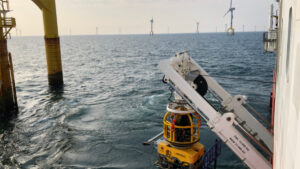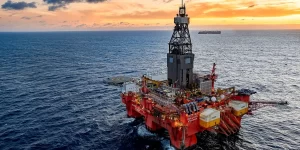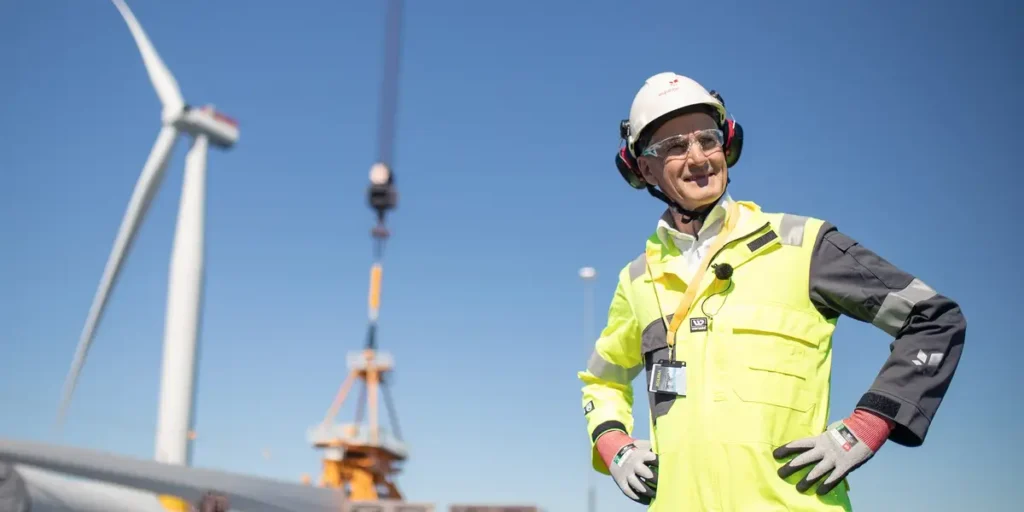
Four of the 11 wind turbines in Norway’s first offshore wind farm have now been installed, towering 190 metres over Fensfjorden before being towed out into the North Sea for offshore floating power generation.
LO President Peggy Hessen Følsvik, NHO Director General Ole Erik Almlid, and Enova CEO Nils Kristian Nakstad, accompanied the Prime Minster to Gulen, where they could see how Hywind Tampen will supply the Gullfaks and Snorre fields in the North Sea with electricity from floating offshore wind.
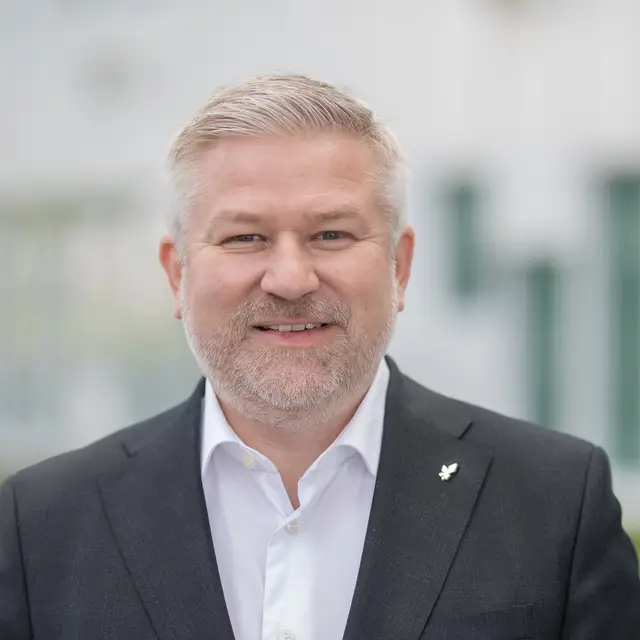
executive vice president for Renewables
“Hywind Tampen proves that floating offshore wind can supply Norway with renewable power. Less than three years after we submitted plans for development and operation, we can now point to the result of good cooperation between authorities and the industry to make floating offshore wind a reality. The next step is to develop larger floating offshore wind projects in the North Sea. This is possible because the industry and the authorities have been bold and helped develop a supplier industry for offshore wind based on expertise from the oil and gas industry,” says Pål Eitrheim, Equinor’s executive vice president for Renewables.
Along with Geir Tungesvik, Equinor‘s executive vice president for Projects, Drilling & Procurement, and project director for Hywind Tampen Olav-Bernt Haga, the delegation was given a tour of the assembly area for the offshore wind turbines. A total of 7 primary suppliers and a large number of subcontractors have contributed to the project, with a contribution rate from Norwegian suppliers of about 50 per cent.
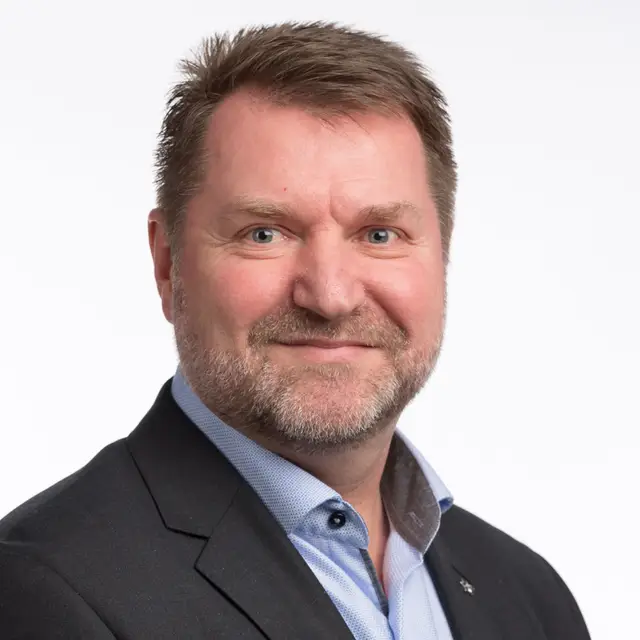
for Projects, Drilling & Procurement
“With Hywind Tampen, we’ve laid the groundwork for new industrial opportunities for Norway and the Norwegian supplier industry in an increasingly global market. Commissioning new and larger turbines, new installation methods, concrete structures and interaction between power generation systems are being tested and further developed. The offshore windfarm we’re in the process of completing is unique, not only in Norway, but worldwide, says Geir Tungesvik, Equinor’s executive vice president for Projects, Drilling & Procurement.
The eleven floating wind turbines that make up Hywind Tampen are currently being assembled at Wergeland Base in Gulen in Vestland County. This is where the tower structure, turbine housing and blades are mounted before being towed 140 km out to the Snorre and Gullfaks fields, where the offshore wind farm will be supplying power to the installations.
The wind farm will have a total system capacity of 88 MW, which will presumably cover about 35 percent of the annual power needs on the five platforms Snorre A and B and Gullfaks A, B and C. This will reduce the need for locally produced gas power on the fields and thus reduce annual emissions from the fields by about 200,000 tonnes of CO2, which is equivalent to emissions from 100,000 vehicles.
The substructures are cast in concrete, using the same technology as the legs for the Troll platform, and are a total of 107.5 metres tall. With the turbine installed on top, 90 metres will be under water; the rotor has a diameter of 167 metres and the blades are 81.5 metres long.
Project costs total around NOK 5 billion. Equinor and its partners have been awarded NOK 2.3 billion in Enova support and NOK 566 million from the NOx Fund. This support has helped further develop the technology to further enable commercialisation of floating offshore wind on a large scale moving forward.
Enacting solutions for coexistence with other users of the ocean is fundamental for the development of offshore wind. Collecting data is essential to examine the impact floating offshore wind could have on fish, birds and the environment.
Equinor has been gathering data and knowledge for several years on Hywind Scotland. Together with the Norwegian Institute of Marine Research and the University of Bergen (UiB) Equinor is supporting a study on pelagic fisheries in the Hywind Tampen area. These data will be used in a major research collaboration called “WindFish” and is most likely the first of many studies in this area in the future.
The Government has an ambition to produce almost as much new electricity from offshore wind as Norway currently produces today and is planning 30 GW of offshore wind by 2040.
Cover image: Prime minister Jonas Gahr Støre at the Hywind Tampen construction site.
(Photo: Ole Jørgen Bratland/Equinor ASA)


